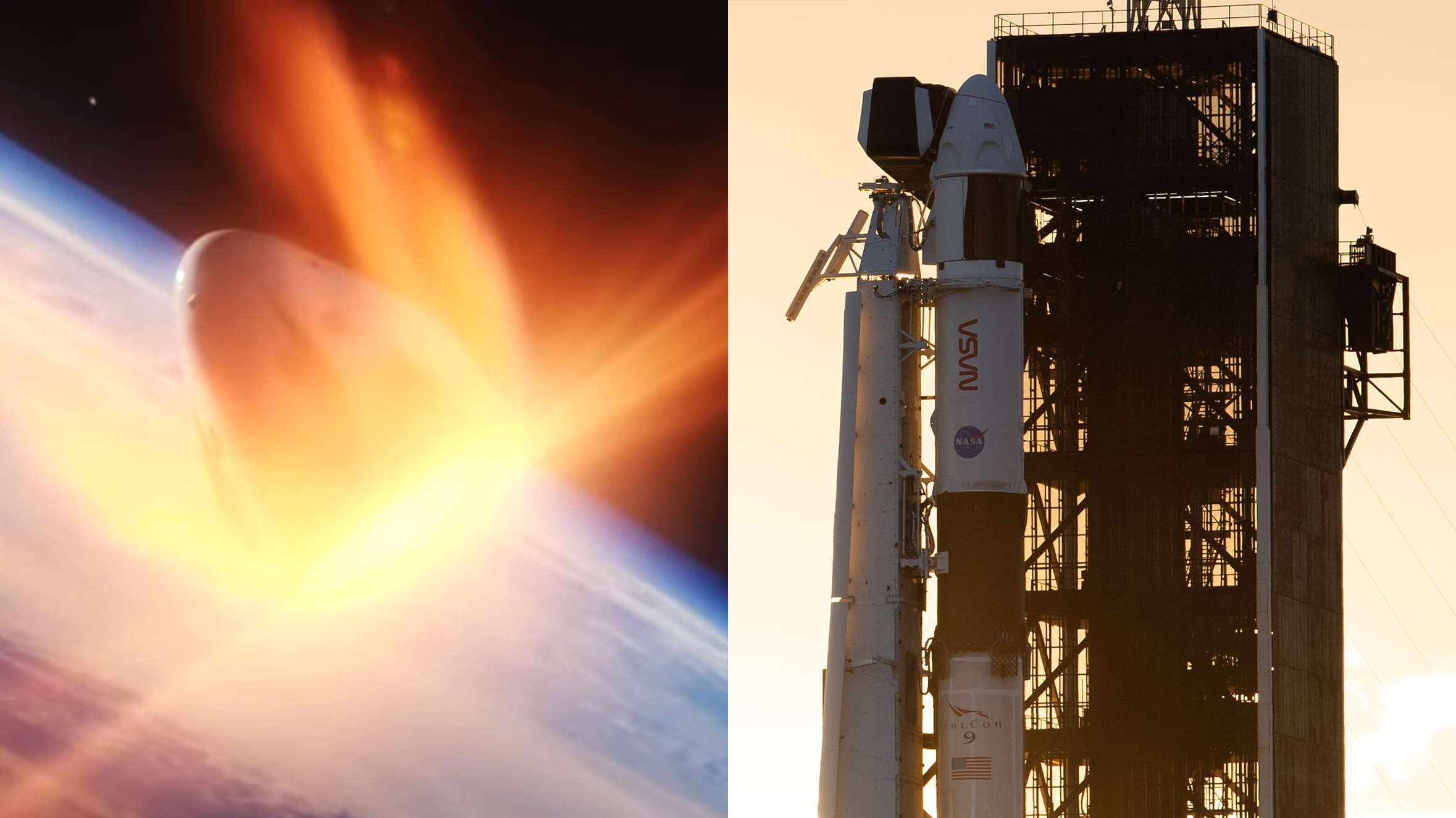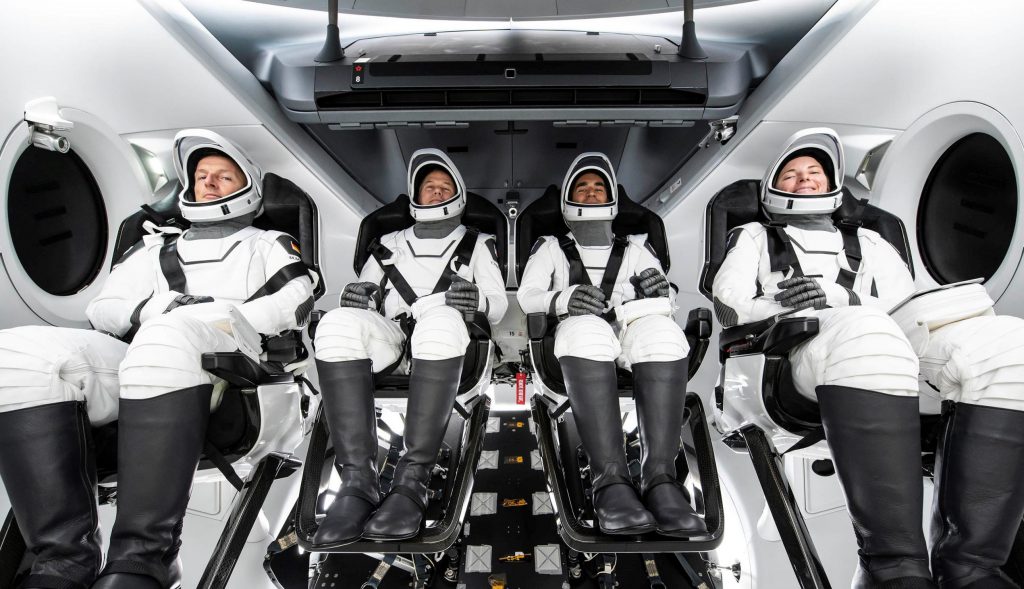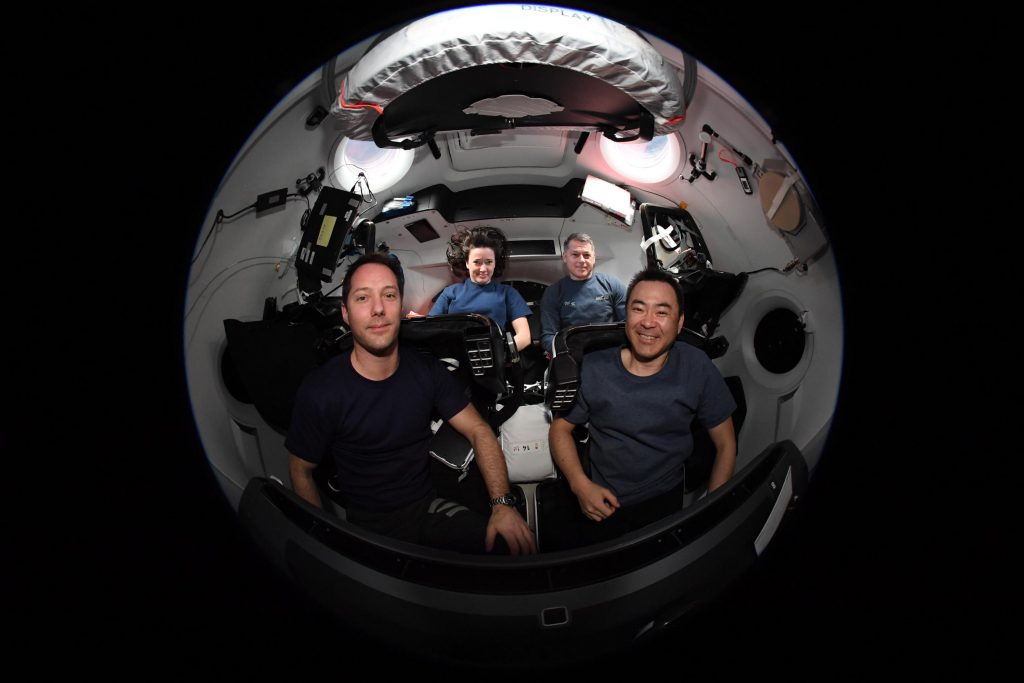

News
SpaceX, NASA schedule back-to-back astronaut recovery and launch after delays
Poor winter weather on Florida’s East Coast and across the Atlantic Ocean has forced NASA and SpaceX to flip the nominal sequence of events for the imminent back-to-back launch and recovery of two Crew Dragons.
Contrary to preference, SpaceX and NASA’s four Crew-2 astronauts are now scheduled to undock from the International Space Station (ISS) and return to Earth before their replacements (Crew-3) launch to the station. As a result, there will be no on-orbit handoff, meaning that only one NASA astronaut – Mark Vande Hei – will be left alongside cosmonauts Anton Shkaplerov and Pyotr Dubrov to crew and operate the US segment of the ISS until Crew-3’s arrival.
After several delays from an initial October 30th target, Crew-3 astronauts Raja Chari, Thomas Marshburn, Matthias Maurer, and Kayla Barron are scheduled to ride Falcon 9 and Crew Dragon to orbit no earlier than (NET) 9:03pm EST, Wednesday, November 10th (02:03 UTC 13 Nov) – two days after Crew-2 is expected to splash down.

Save for a one-day delay from October 30th to October 31st needed to give SpaceX and NASA time to qualify a fixed plumbing leak for crewed spaceflight, all subsequent delays into November have been caused by poor weather – a rather common late fall and winter occurrence in the Atlantic Ocean and southern US. The weather isn’t entirely to blame, though. Crew Dragon, SpaceX, and NASA are also partly responsible due to the extremely strict and narrow range of weather conditions the spacecraft has been certified to operate in.
Worse, a large portion of Dragon’s weather constraints are for hypothetical abort scenarios rather than the nominal launch – not “is it safe to launch?” but “is it safe to launch if something fails catastrophically and Dragon aborts and has to splash down anywhere in a several-dozen-mile corridor stretching the entire length of the Atlantic?” In the case of Crew-3’s launch, the main condition making that vast abort zone a no-go for launch is surface winds.
While aborting an expensive, time-sensitive rocket launch due to ground winds might bring to mind some kind of storm with vast swells and torrential rain, the reality is that NASA has only rated Crew Dragon to splash down when surface winds are less than 8-11 mph (13-18 km/h). In other words, the conditions causing 10+ days of delays and leading NASA to leave a skeleton crew at the space station’s US segment amounts to a firm breeze. There are likely many reasons (most hopefully good) for that highly conservative limit but ultimately, it means that NASA’s Crew Dragon missions will almost always be at risk of weather delays both going up and coming down.

As if to emphasize that fact, winds in the Gulf of Mexico, on the opposite side of Florida, also caused NASA to delay SpaceX’s Crew-2 departure and splashdown from November 6th/7th to November 8th, raising the risk of more Crew-3 delays or another complex schedule conflict if conditions force another change. A minor issue with Dragon’s toilet discovered during Inspiration4 and fixed on Crew-3’s ride to space will preclude its use during Crew-2’s 11-hour trip home, but that change should be barely noticeable to professional astronauts that are required to wear diapers as a precaution regardless. Otherwise, throughout the delays, Falcon 9 B1067, Crew-3 Dragon C210, and Crew-2 Dragon C206 have all thankfully remained healthy and ready to go.
Crew-2 is scheduled to undock from the ISS around 2pm EST (17:00 UTC) on November 8th and could splash down as early as 10:33 pm (03:33 UTC) – less than nine hours later.
Elon Musk
Tesla investors will be shocked by Jim Cramer’s latest assessment
Jim Cramer is now speaking positively about Tesla, especially in terms of its Robotaxi performance and its perception as a company.

Tesla investors will be shocked by analyst Jim Cramer’s latest assessment of the company.
When it comes to Tesla analysts, many of them are consistent. The bulls usually stay the bulls, and the bears usually stay the bears. The notable analysts on each side are Dan Ives and Adam Jonas for the bulls, and Gordon Johnson for the bears.
Jim Cramer is one analyst who does not necessarily fit this mold. Cramer, who hosts CNBC’s Mad Money, has switched his opinion on Tesla stock (NASDAQ: TSLA) many times.
He has been bullish, like he was when he said the stock was a “sleeping giant” two years ago, and he has been bearish, like he was when he said there was “nothing magnificent” about the company just a few months ago.
Now, he is back to being a bull.
Cramer’s comments were related to two key points: how NVIDIA CEO Jensen Huang describes Tesla after working closely with the Company through their transactions, and how it is not a car company, as well as the recent launch of the Robotaxi fleet.
Jensen Huang’s Tesla Narrative
Cramer says that the narrative on quarterly and annual deliveries is overblown, and those who continue to worry about Tesla’s performance on that metric are misled.
“It’s not a car company,” he said.
He went on to say that people like Huang speak highly of Tesla, and that should be enough to deter any true skepticism:
“I believe what Musk says cause Musk is working with Jensen and Jensen’s telling me what’s happening on the other side is pretty amazing.”
Tesla self-driving development gets huge compliment from NVIDIA CEO
Robotaxi Launch
Many media outlets are being extremely negative regarding the early rollout of Tesla’s Robotaxi platform in Austin, Texas.
There have been a handful of small issues, but nothing significant. Cramer says that humans make mistakes in vehicles too, yet, when Tesla’s test phase of the Robotaxi does it, it’s front page news and needs to be magnified.
He said:
“Look, I mean, drivers make mistakes all the time. Why should we hold Tesla to a standard where there can be no mistakes?”
It’s refreshing to hear Cramer speak logically about the Robotaxi fleet, as Tesla has taken every measure to ensure there are no mishaps. There are safety monitors in the passenger seat, and the area of travel is limited, confined to a small number of people.
Tesla is still improving and hopes to remove teleoperators and safety monitors slowly, as CEO Elon Musk said more freedom could be granted within one or two months.
News
Tesla launches ultra-fast V4 Superchargers in China for the first time
Tesla has V4 Superchargers rolling out in China for the first time.

Tesla already has nearly 12,000 Supercharger piles across mainland China. However, the company just initiated the rollout of the ultra-fast V4 Superchargers in China for the first time, bringing its quick-charging piles to the country for the first time since their launch last year.
The first batch of V4 Superchargers is now officially up and running in China, the company announced in a post on Chinese social media outlet Weibo today.
The company said in the post:
“The first batch of Tesla V4 Superchargers are online. Covering more service areas, high-speed charging is more convenient, and six-layer powerful protection such as rain and waterproof makes charging very safe. Simultaneously open to non-Tesla vehicles, and other brands of vehicles can also be charged. There are more than 70,000 Tesla Superchargers worldwide. The charging network layout covers 100% of the provincial capitals and municipalities in mainland China. More V4 Superchargers will be put into use across the country. Optimize the charging experience and improve energy replenishment efficiency. Tesla will accompany you to the mountains, rivers, lakes, and seas with pure electricity!”
The first V4 Superchargers Tesla installed in China are available in four cities across the country: Shanghai, Zhejiang, Gansu, and Chongqing.

Credit: Tesla China
Tesla has over 70,000 Superchargers worldwide. It is the most expansive and robust EV charging network in the world. It’s the main reason why so many companies have chosen to adopt Tesla’s charging connector in North America and Europe.
In China, some EVs can use Tesla Superchargers as well.
The V4 Supercharger is capable of charging vehicles at speeds of up to 325kW for vehicles in North America. This equates to over 1,000 miles per hour of charging.
Elon Musk
Elon Musk hints at when Tesla could reduce Safety Monitors from Robotaxi
Tesla could be reducing Safety Monitors from Robotaxi within ‘a month or two,’ CEO Elon Musk says.

Elon Musk hinted at when Tesla could begin reducing Safety Monitors from its Robotaxis. Safety Monitors are Tesla employees who sit in the front passenger seat during the driverless rides, and are there to ensure safety for occupants during the earliest rides.
Tesla launched its Robotaxi fleet in Austin last Sunday, and after eight days, videos and reviews from those who have ridden in the driverless vehicles have shown that the suite is safe, accurate, and well coordinated. However, there have been a few hiccups, but nothing that has put anyone’s safety in danger.
A vast majority — close to all of the rides — at least according to those who have ridden in the Robotaxi, have been performed without any real need for human intervention. We reported on what was the first intervention last week, as a Safety Monitor had to step in and stop the vehicle in a strange interaction with a UPS truck.
Watch the first true Tesla Robotaxi intervention by safety monitor
The Tesla and UPS delivery truck were going for the same street parking space, and the Tesla began to turn into it. The UPS driver parallel parked into the spot, which was much smaller than his truck. It seemed to be more of an instance of human error instead of the Robotaxi making the wrong move. This is something that the driverless cars will have to deal with because humans are aggressive and sometimes make moves they should not.
The Safety Monitors have not been too active in the vehicles. After all, we’ve only seen that single instance of an intervention. There was also an issue with the sun, when the Tesla braked abnormally due to the glare, but this was an instance where the car handled the scenario and proceeded normally.
With the Robotaxi fleet operating impressively, some are wondering when Tesla will begin scaling back both the Safety Monitors and Teleoperators that it is using to ensure safety with these early rides.
CEO Elon Musk answered the inquiry by stating, “As soon as we feel it is safe to do so. Probably within a month or two.”
As soon as we feel it is safe to do so.
Probably within a month or two. We continue to improve the Tesla AI with each mile driven.
— Elon Musk (@elonmusk) June 30, 2025
Musk’s response seems to confirm that there will be fewer Teleoperators and Safety Monitors in the coming months, but there will still be some within the fleet to ensure safety. Eventually, that number will get to zero.
Reaching a point where Tesla’s Robotaxi is driverless will be another significant milestone for the company and its path to fully autonomous ride-sharing.
Eventually, Tesla will roll out these capabilities to consumer-owned vehicles, offering them a path to generate revenue as their car operates autonomously and completes rides.
For now, Tesla is focusing on perfecting the area of Austin where it is currently offering driverless rides for just $4.20 to a small group of people.
-

 News5 days ago
News5 days agoTesla Robotaxi’s biggest challenge seems to be this one thing
-

 News2 weeks ago
News2 weeks agoTesla confirms massive hardware change for autonomy improvement
-

 Elon Musk2 weeks ago
Elon Musk2 weeks agoElon Musk slams Bloomberg’s shocking xAI cash burn claims
-

 News2 weeks ago
News2 weeks agoTesla features used to flunk 16-year-old’s driver license test
-

 News2 weeks ago
News2 weeks agoTesla China roars back with highest vehicle registrations this Q2 so far
-

 News2 weeks ago
News2 weeks agoTexas lawmakers urge Tesla to delay Austin robotaxi launch to September
-

 News2 weeks ago
News2 weeks agoTesla dominates Cars.com’s Made in America Index with clean sweep
-

 News2 weeks ago
News2 weeks agoTesla’s Grok integration will be more realistic with this cool feature





















